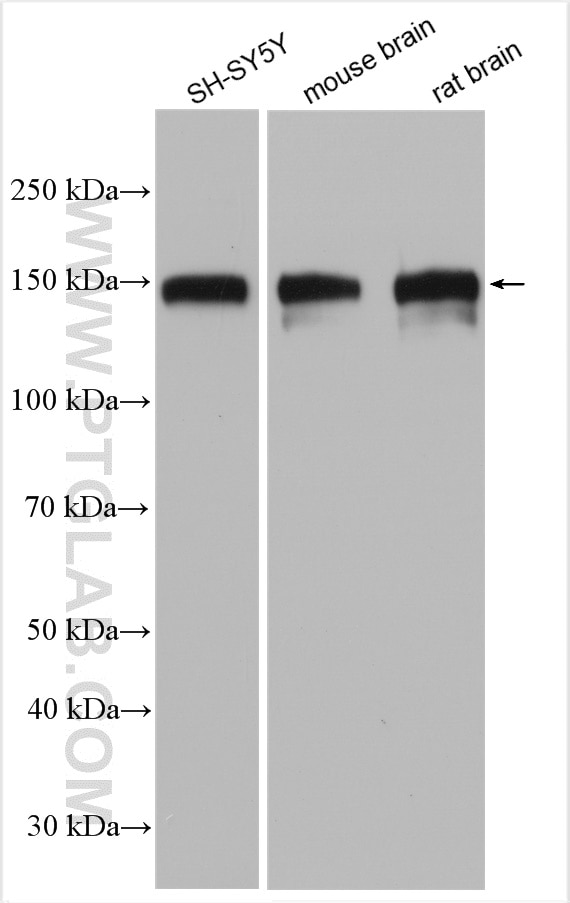SNIP/p140Cap Polyklonaler Antikörper
SNIP/p140Cap Polyklonal Antikörper für WB, ELISA
Wirt / Isotyp
Kaninchen / IgG
Getestete Reaktivität
human, Maus, Ratte
Anwendung
WB, ELISA
Konjugation
Unkonjugiert
Kat-Nr. : 29890-1-AP
Synonyme
Geprüfte Anwendungen
| Erfolgreiche Detektion in WB | SH-SY5Y-Zellen, Maushirngewebe, Rattenhirngewebe |
Empfohlene Verdünnung
| Anwendung | Verdünnung |
|---|---|
| Western Blot (WB) | WB : 1:5000-1:50000 |
| It is recommended that this reagent should be titrated in each testing system to obtain optimal results. | |
| Sample-dependent, check data in validation data gallery | |
Produktinformation
29890-1-AP bindet in WB, ELISA SNIP/p140Cap und zeigt Reaktivität mit human, Maus, Ratten
| Getestete Reaktivität | human, Maus, Ratte |
| Wirt / Isotyp | Kaninchen / IgG |
| Klonalität | Polyklonal |
| Typ | Antikörper |
| Immunogen | SNIP/p140Cap fusion protein Ag31857 |
| Vollständiger Name | SNAP25-interacting protein |
| Berechnetes Molekulargewicht | 127 kDa |
| Beobachtetes Molekulargewicht | 145 kDa |
| Gene symbol | SNIP |
| Gene ID (NCBI) | 80725 |
| Konjugation | Unkonjugiert |
| Form | Liquid |
| Reinigungsmethode | Antigen-Affinitätsreinigung |
| Lagerungspuffer | PBS with 0.02% sodium azide and 50% glycerol |
| Lagerungsbedingungen | Bei -20°C lagern. Nach dem Versand ein Jahr lang stabil Aliquotieren ist bei -20oC Lagerung nicht notwendig. 20ul Größen enthalten 0,1% BSA. |
Hintergrundinformationen
SNIP, also named SRC kinase signaling inhibitor 1 (SRCIN1) and p140 Cas-associated protein (p140CAP), contains two regions of highly charged amino acids, two proline-rich regions, and two coiled-coil domains. SNIP plays a role in SRC inactivation and acts as a tumor suppressor gene in cancers. MiR-32 suppresses the expression of SNIP, thereby suppressing proliferation and epithelial-mesenchymal transition (EMT) of human liver cancer cells (PMID: 28550679).
Protokolle
| PRODUKTSPEZIFISCHE PROTOKOLLE | |
|---|---|
| WB protocol for SNIP/p140Cap antibody 29890-1-AP | Protokoll herunterladen |
| STANDARD-PROTOKOLLE | |
|---|---|
| Klicken Sie hier, um unsere Standardprotokolle anzuzeigen |


